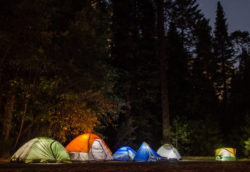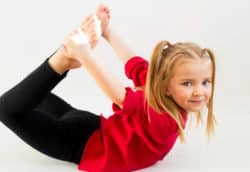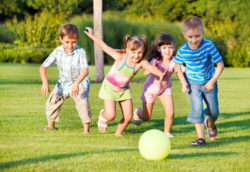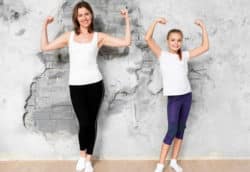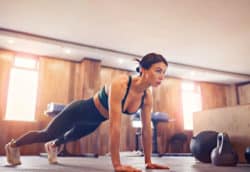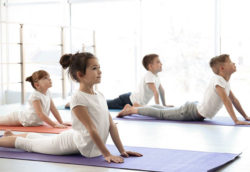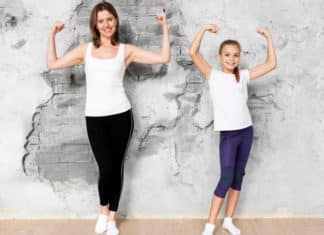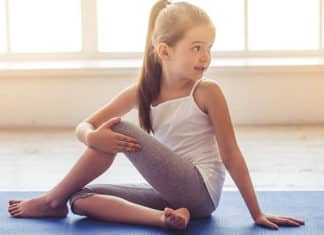Wondering what the best workouts for the young athletes are? It is very important for the younger ones to perform the exercise precisely to strengthen themselves in the right way. Squats, Deadlifts, Bench Presses, etc. are among the exercises which help to build the core of the body! But is that it? And would that be enough?
It is surely debatable on what are the suitable weights for the beginners and amount of exercise they can perform. Before the young athletes can embark on a routine exercise, we have to prepare them first. There will be intense demands and to establish the baseline level of mobility and systematic strengthening of the overall body. It is not just about the muscle power but every bit of the body has to be put under a proper exercise to power up. Improper exercises have an adverse effect and lead to tight hip flexors or poor ankle mobility which we surely do not want.
The right amount of weight and exercises as routine is the key. You must be able to see a major improvement in the body with these basic things we are going to mention below for the workout for young athletes.
Stretch the Muscles You Most Often Use:
Yes, the young athletes could be keen to start their rum immediately they are ready but the thumb rule is to stretch and warm up. The young athletes have usually tight muscles overall and need attention towards flexibility. Regular stretching at the start and end of the routine is a must. Stretch the pecs, the lats, abdominal, hips, calves, hamstrings properly and compulsorily every single day.
This should absolutely the starting point for all the kids. Dynamic stretching (which means the flexibility efforts) should precede all types of activity or workout and static stretching where you hold the muscle group and relax by stretching it for 10-20 seconds must be done immediately after the physical activity or throughout the day as far as possible.

1. Supine Barbell Hip Bridge
Works on: hamstrings, gluteals, and body core.
Benefits: hip strength, improved knee stability, and mobility.
How To Do It:
- Bend your knees bent about 90 degrees while lying on your back.
- Hold a barbell with your hands in front of your hips.
- Start by lightly bracing the core of your body.
- Now, until you lift your hips along with lower torso off the ground, keep pushing through your heels (with the help of your glutes and hamstrings, you must lift the balls of your feet off the ground as though pushing)
- Your body forms a ramp in the above position from your shoulders to your knees.
- Hold this position and then lower down.
- You must repeat this for 10-12 repetitions for best results.
Note: You can comfort yourself with a towel placed on the hip.
2. Prone Cobra
Works on: deltoids, middle and lower trapezuis, external rotators and overall body core.
Benefits: shoulder mobility with core strength, improved the thoracic extension. This helps in reducing excessive strain on the rotator cuff and lower back.
How To Do It:
- Using a stability ball, lie prone over it having your chest up off the ball and legs straight stretched.
- Using your arms positioned outstretched in front of, start by bracing your core importantly.
- Now, you must bring your arms around the back of you as far as possible without pain.
- While doing this, you must keep your thumbs pointed up towards the roof.
- Once you’ve got to your furthest point possible with ease, get your arms back to the starting position and relax and repeat.
- You must do this exercise for 10-12 repetitions for best results.
Note: Let the young athlete observe someone doing it before they try it by themselves.
3. Bulgarian Split Squat
Works on: quadriceps, hamstrings and gluteals and majorly the core.
Benefits: Better hip mobility, balance, overall coordination, and lower body strengthening.
How to Do It:
- Stand in front of an exercise bench with a feet distance.
- Start by balancing on one leg as you place your back foot on the bench.
- Lightly brace your core while keeping your torso as upright as possible and as you slowly try to lower your back knee towards the ground. Here, simultaneously you are allowing your front knee to bend as well but to a 90-degree angle only.
- Hold the position for a second in the bottom point and then you must push back up.
- You must repeat until you’ve completed 10-12 repetitions per side for the best results.
4. Perfect Posture Push-Up
Works on: upper body (chest, shoulders), triceps and body core.
Benefits: Built systemic strength and core stability.
How To Do It:
- You must start with the normal Push-Up position. Place your hands a little outside with shoulder-width apart, brace your core and legs and “pack” your shoulder blades
- As you stand this upright plank position, have a trainer or the coach to place a lacrosse stick, broomstick, or hockey stick lengthwise along the spine. The stick should balance properly on the back of your head, shoulder blades and tailbone while executing the drill
- Smoothly, form about 45-degree angle to your torso by lowering yourself toward the surface with the elbows
- Once you reach a few inches off the ground, apply pressure and push back up to the starting position without altering your position or removing contact with the stick at any point in the exercise. This is the challenging bit but the most useful hack to do it right.
- You must do 10-12 repetitions per set
5. Pallof Press
Works on: core, chest, shoulders, and triceps
Benefits: increased core stability and upper body strength.
How To Do It:
- Using a cable resistance machine or sturdy object with a resistant band attached for safety, stand aside from it.
- Your distance from the anchoring point of the band you are using must depend on the strength and the tension of the band.
- Once you have the correct tension (or weight), start by bracing your core and packing your shoulder blades such that as you press the resistance from your body directly in front of your chest, you will have your arms bent, to the same point with your arms fully extended.
- You must keep your core and lower body braced.
- It is not the right way to do it if you allow the resistance to move toward the anchoring point. IT must be just straight out and right back toward your chest strengthening the shoulders and triceps with the core.
- You must do 10-12 repetitions and then turn around to do it the opposite way.

